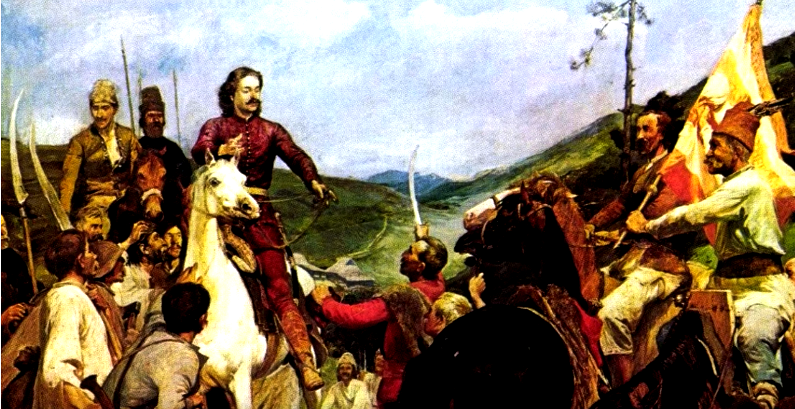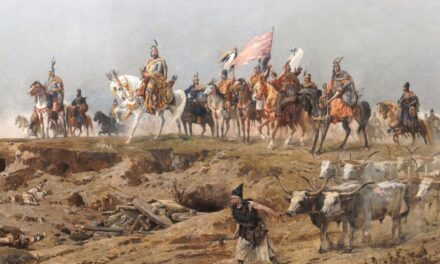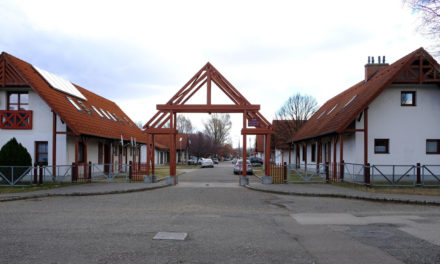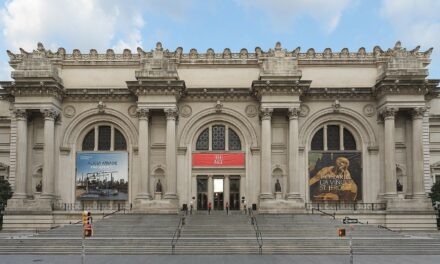"A nation that does not know its past does not understand its present, and cannot create its future!"
Europe needs Hungary... which has never let itself be defeated
Péter Zrínyi is the martyr of Bécsujhely
Péter Zrínyi, the last significant male member of the family, the younger brother of Miklós Zrínyi, was born in 1621 in Verbovec.
He and his brother went to school together, so he also grew up in Graz. Péter also took part in the battles against the Turks, as a result of which the court appointed him captain-in-chief of the Croatian lands in 1647. Like his ancestors and his brother Miklós, he regularly attacked and chased the Turks. For this reason, Porta complained several times to the Viennese court that Péter Zrínyi was violating the Habsburg-Turkish agreement. The Council of War therefore warned Péter Zrínyi on numerous occasions as a peace breaker. Despite this, by virtue of his ancestral rights, after the death of Miklós, he became the Croatian ban in 1665. The court could not prevent Péter Zrínyi from becoming the master of the southern ends.
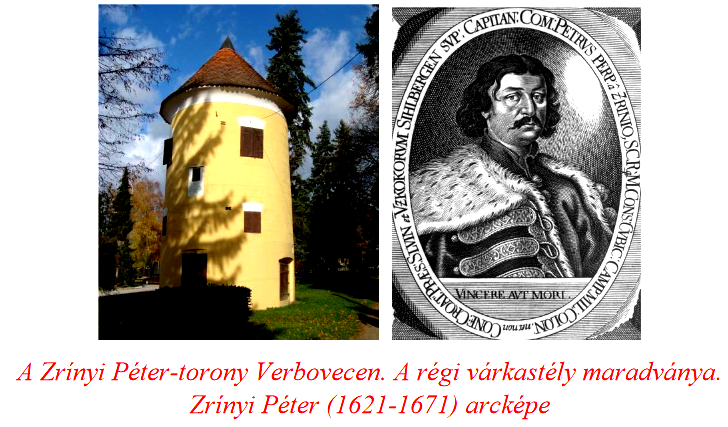
Willingly or unwillingly, Péter fell into the nobleman's conspiracy initiated by Miklós Zrínyi, but which only took shape later.
From 1666, he became a part of the noble organization started under the leadership of Palatine Ferenc Wesselényi. The goal was no longer just to expel the Turks, but to overthrow the tyrannical rule of Emperor Lipót I. Vienna's well-functioning spy network has been monitoring the meetings of the Hungarian lords for quite some time. After the early death of Palatine Wesselényi and Archbishop György Lippay, Péter Zrínyi became the leader of the conspirators. The lords of Vienna did not hesitate for long now. Péter Zrínyi was lured to Vienna and immediately arrested. Disillusioned from the Viennese court, previously loyal lords united against King Lipót I.
The king (emperor) did not delay in responding. He literally drowned the conspiracy of the Hungarian nobles led by Palatine Wesselényi. (Croatians still refer to this historical event as the Zrínyi-Frangepán conspiracy.) Unfortunately, the conspiracy was thwarted by the lords themselves, when, frightened by Lipót's anger, they themselves uncovered the threads of the organization. One of the meeting places of the participating nobles was Sárospatak. The Sub Rosa (under the rose) room of the castle became a notable room in our history, as it was here that the organizing lords met.
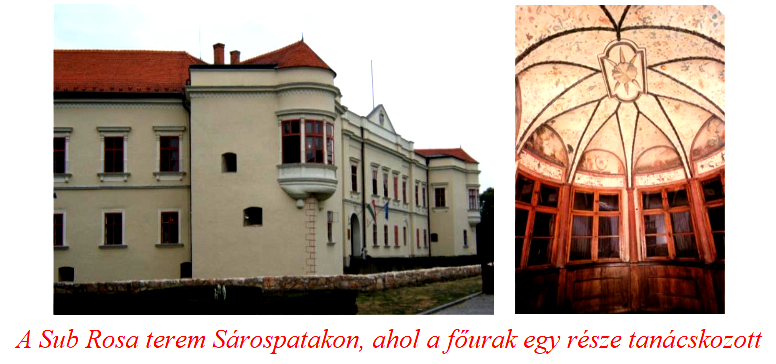

Ferenc Nádasdy himself gave the first news about an organization in Upper Hungary before the Court War Council.
In the same year, 1668, the Porte also inquired about the organization, especially considering the extent to which it affects Transylvania. At the same time, Mihály Bory, a leading member of the nobility, testified before the secret council in Vienna. On this, Mária Széchy, Wesselényi's widow, took Bory on board, saving the noble family's reputation, wealth, and possessions. We could use a longer, but at the same time interesting story to show how Mária Széchy - after the death of her husband - became a key figure in the organization. Ferenc Nádasdy and Péter Zrínyi was not cloudless, which led to the fact that in 1669 both lords testified to Lipót about the organization. Péter Zrínyi was persuaded by Mária Széchy to confess, which he did in return for the lord's promise of mercy to Vienna. Zrínyi was thrown into prison in Vienna in 1670 - as he was mentioned before.
 It is worth noting that in 1663-1664 Miklós Zrínyi himself negotiated with Wesselényi in Murány Castle, which meant the preparation of the organization.
It is worth noting that in 1663-1664 Miklós Zrínyi himself negotiated with Wesselényi in Murány Castle, which meant the preparation of the organization.
This is alluded to by the character of the narrative poem, Mars (who in the story is none other than Miklós Zrínyi). After successful campaigns against the Turks, Miklós Zrínyi was honored throughout Europe with the name Magyar Mars. The events in Murány were recorded by the eyewitness István Gyöngyössi, who was in the service of Wesselényi.

Péter Zrínyi and his brother-in-law, Ferenc Kristóf Frangepán - who was also an active part of the organization - were executed in Bécsújhely in April 1671 after a year of detention. They did all this despite the royal promise, since Lipót had promised the nobles immunity. Habsburg's breach of word was neither the first nor the last committed against the Hungarians.
Mária Széchy did not escape the wrath of the Habsburgs either. The widow with enormous wealth and possessions lived her last years in Kőszeg. When he died in the summer of 1679, even his funeral could only take place with a simple ceremony. His grave can be seen in the Szent Jakab church in Kőszeg. The Vienna court, like so many other Hungarian lords, merged his wealth and possessions into the property of the treasury.
From the few examples mentioned so far, it can be seen how in the 17th century the Hungarian-hating emperor Lipót ruined and destroyed Hungarian noble families. The goal of the Viennese court was, on the one hand, to break down all kinds of Hungarian resistance, and on the other hand, to acquire their estates and property.
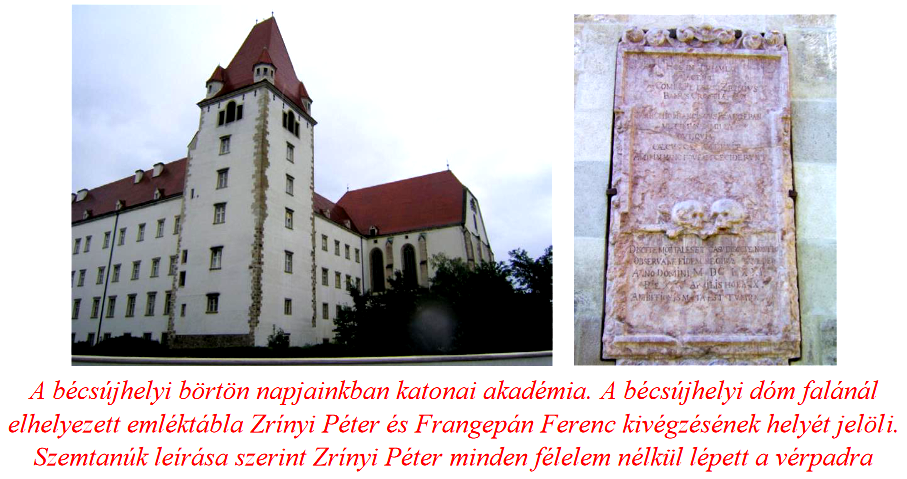

Ferenc Nádasdy was executed in the courtyard of the Vienna City Hall, and with this cruel sentence, a bright, heroic era of the family with a great past came to an end. Despite the pleas of his children, the disgraced body was put on public display for several hours in the courtyard of the town hall. His funeral took place in Léka, in the church he founded. His property and possessions were confiscated by the Habsburgs. He fell under the influence of wealth and fame, even the names of his children were changed. However, the family and the name Nádasdy lived on in the sons' descendants, and even today we can count them among our illustrious Hungarian ancestors. (We don't have to do anything but go to Sárvár or Nádasdladány.)
Emperor Lipót is the gravedigger of the Hungarians
The lord's conspiracy gave Lipót an excellent opportunity to literally behead the excellence of the Hungarian nobility. The spectacular execution of the three lords was only the tip of the iceberg. Hundreds of nobles were arrested and sentenced to many years in prison, and what was important was the expansion of the greedy Viennese treasury at the expense of the Hungarians. The so-called "treason trials", which served to bring the rest of Hungary under the final yoke, were worth one another.

Lipót launched a comprehensive campaign to liquidate Hungary and deal with the nobility that opposed him. This also gave Vienna an excellent opportunity to attack the Protestants, especially their leading ministers. It caused great outrage across Europe when dozens of preachers were abducted and sold as galley slaves. In Hungary during these years, regardless of their religious affiliation, countless people were forced to seek shelter within their own country. They sought refuge in forests, mountains, and reed beds to save their bare lives. (These hideouts later became the Kuruc warriors.)
The life of Ilona Zrínyi (1643-1703)
Born in March 1643 in Drávaszilas (now Podbras) in Muraköz, her father was Péter Zrínyi and her mother was Katalin Frangepán. Ilona was 28 years old when, in 1671, her father, Péter Zrínyi, and her mother's brother, Ferenc Frangepán, were executed for participating in the lord's conspiracy. Ilona received an upbringing appropriate to the family's financial status and noble rank, but in 1664, after the death of Miklós Zrínyi, the family's exemplary career was interrupted. It is true that Péter Zrínyi was able to keep his rank and estates, and even his wife, Katalin Frangepán, actively and effectively politicized.

Péter Zrínyi and his wife did everything they could to find a suitable husband for their daughter who was put up for sale.
It is because of this that in the summer of 1665, the appearance of the twenty-two-year-old Ilona Zrínyi and the twenty-year-old Ferenc Rákóczi I exchanged tickets at the Trencsénteplice spa. wedding was held at the Rákócziak estate in Zboro The wedding also provided an opportunity for important politicians to meet. There were the leaders of Transylvania, delegates from Vienna and Cracow, be they Catholics or Protestants. There was great unrest throughout the country. The Turks were once again preparing for a campaign, and the religious antagonisms within the country were renewed. To save his rank and possessions, Péter Zrínyi was constantly on a diplomatic trip between Sárospatak, Vienna and Venice.
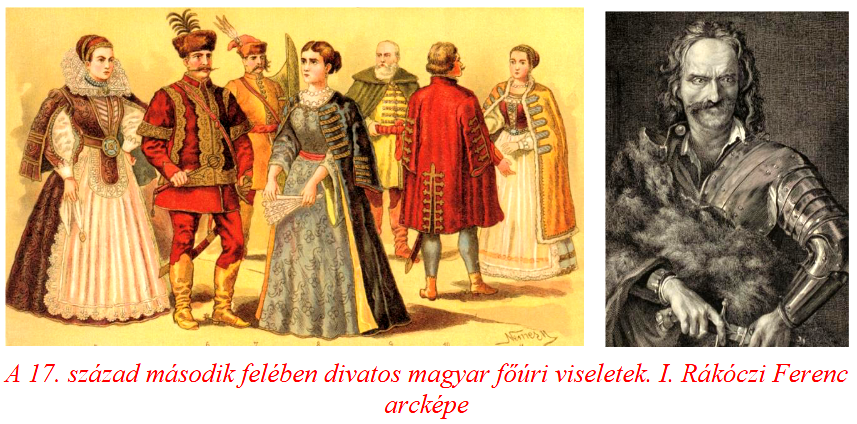
Ilona Zrínyi and the whole family were accompanied by a series of tragedies. Their son György was born in 1667, but he died shortly after his birth. In 1671, Péter Zrínyi, Ilona's father, and her mother's brother, Ferenc Frangepán, were executed. Katalin Frangepán went crazy with the losses, and the people of the court locked her in a nunnery in Graz. Ilona's younger sisters, Judith and Veronika, were taken away, and they also spent the rest of their lives in a monastery. His younger brother, János Zrínyi, settled in Vienna with his widow Miklós Zrínyi and her young children. Her husband, Ferenc Rákóczi, also received the death sentence, as he also participated in the lord's conspiracy. The Zrínyi estates were managed by the Imperial Chamber. From Csáktornya, which had seen better days, through the castles to the rich sea port, Buccari (Szádrév), the ancient family estate became the prey of the imperial officials.
In the part of the country inhabited by Hungarians, more and more refugees gathered in the forests and mountains. They were the bujdošos who would play a major role in Hungarian history in the following years. Bujdosó is an exclusively Hungarian historical concept, which refers to those soldiers who sought refuge either from the tyranny of the court or after losing battles. There were more and more of them, they fought in groups in the forests and took revenge against Vienna. For a long time, however, they did not have a leader who could organize the resistance, the open fight. In 1672, fugitives invaded Upper Hungary from Transylvania. They hoped that Ferenc I. Rákóczi, who was staying on his property, would lead them. However, the lord staying in Regéc said no. His mother, Zsófia Báthori, who strongly adhered to her Roman Catholic faith and the Habsburgs, played a decisive role in her decision.
Religious conversions
(György II Rákóczi, son of Zsuzsanna Lorántffy and the son of Zsuzsanna Lorántffy, the Protestant prince György I. Rákóczi I. chose the Catholic Zsófia Báthori as his wife. The wedding, held in Gyulafehérvár in 1643, was not uneventful. The devout Catholic Zsófia was only before the wedding, he learned that he had to convert to the Reformed faith. His mother, Anna Zakreszka, of Polish origin, took him up on this during the ceremony. The Hungarian and Polish Catholics diplomatically "turned away" because this marriage had to take place. However, Princess Zsófia in her soul , he remained a Roman Catholic in his faith.
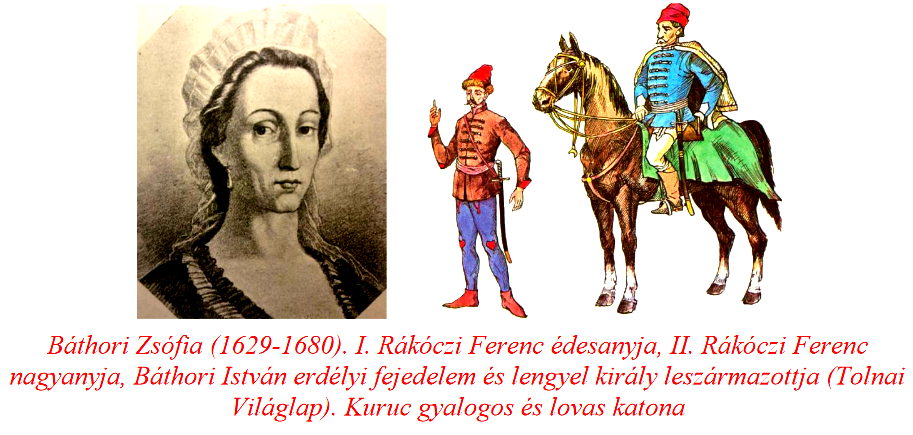
Ferenc Rákóczi was only fifteen years old when his father, II.
György Rákóczi died in 1660, after the campaign in Poland, which ended unhappily, in the battle of Szaszfenes. Little Ferenc (named after his father's brother named Ferenc, who died early) was elected prince in Gyulafehérvár in 1652 when he was seven years old. However, he was never able to exercise this office. Zsófia Báthori fights the Catholic-Protestant battle herself, since she wanted to return to the Roman Catholic faith after her husband's death. However, his request is surprisingly rejected by Lipót, the most zealous Catholic ruler. He does this for the political reason that the Hungarian Holy Crown cannot be placed on the head of a Calvinist prince. However, Zsófia Báthori, the 32-year-old widow, re-converted to Catholicism in 1661 with her 16-year-old son. It is true that the connection with Protestant Transylvania ended, and the princely throne was lost. Let's add that Sultan Mehmed also played a role in this. Zsófia Báthori wants more power, as she wants to see her son and then her grandson - after the glorious Polish king István Báthori - on the throne of Krakow. And the king of Poland can be no other than one who follows the Roman Catholic faith.
The change of faith later saved the life of Ferenc I. Rákóczi, when he also got involved in the lord's conspiracy. Referring to this, Zsófia Báthori asks for mercy for her son. However, this would not have been enough. The payment of HUF 400,000 to the court treasury and the intervention of the Jesuit order had to be used so that Ferenc I. Rákóczi would not suffer the fate of his father-in-law.

Ilona Zrínyi was cheered up from her deep grief by her daughter Julianna, born in September 1672.
However, the horrors that surrounded the family did not end. Adding to the trouble, Lipót suspended the Hungarian constitution in 1673 and appointed a governorship to lead the country. The emperor and king set up an emergency tribunal, the operation of which was supervised by Archbishops György Szelepcsenyi and Lipót Kollonich of Esztergom. The famous saying "I will make Hungary first a prisoner, then a beggar, and finally a Catholic" comes from the latter archpriest. Another statement with the same content as the previous one, which he put down on paper in 1689, is cited less often: "Hungary, or a large part of it, should be Germanized, and the Hungarian blood prone to revolutions and unrest should be tamed with the German to the loyalty and love of its natural master and hereditary king".

In Hungary, in the 1670s, acts of violence began again on the part of both Catholics and Protestants. In 1675, the Protestants broke into the estates of Zsófia Báthori and then Ferenc I. Rákóczi in 1676, looting and burning a number of villages. It can be assumed that Ferenc I. Rákóczi and his wife Ilona Zrínyi fled just such an attack from Sárospatak to the safer Munkács. In the meantime, they stopped in Borsi, and here, in the village's old castle, on March 27, 1676, their son, little Ferenc Rákóczi, was born. A little while later, on July 8, 1676, the father, Ferenc I. Rákóczi, died in Makovica (Zboró). During the decade-long marriage, the family lived through difficult times, but at the age of 31 - was it due to an assassination or an organ disorder? - the deceased prince left a big void in the life of Ilona Zrínyi, who was left alone with her two small children.
Zsófia Báthori and Ilona Zrínyi are the educators of little Rákóczi
From birth, little Ferkó was raised by the 33-year-old "beautiful widow" and the 47-year-old "old princess" on the Rákóczi estates. We even know the nanny's name: János Csitári, Marina Pap, who helped a lot in the child's development. The "young prince" or "prince prince", as he was nicknamed, was held in high esteem, since all the men in the family had died out. His grandmother called him Ferko, and his mother called him "my sweet treasure, my precious pearl". At the end of the 17th century, infant mortality was high in Hungary as well, so they took great care of small children.

The family spent most of their time in safe Munkács, at the junction of the main roads of Transylvania, Poland and royal Hungary.
The value and advantages of the excellent geographical location were increased by the seemingly impregnable castle of Munkacci, built with thick walls. Of course, Lipót also had his eye on the famous fortress of the eastern ends.
He demanded from Munkács, which he thought was just, since he appointed himself the guardian of the Rákóczi orphans - Julianna and Ferenc. However, Zsófia Báthori and Ilona Zrínyi acted quickly and legally, and the children were allowed to stay with their mother, and the mother could also exercise guardianship. This was combined with the fact that the Rákóczi estates remained in the hands of the family. The attacks of the insurgents and the march of the imperial troops caused increasingly degenerate antagonisms in the region. In the winter of 1677, Ilona Zrínyi unexpectedly packed up and moved from the scene of bloody clashes with her children to the more distant and safer Regéc castle.
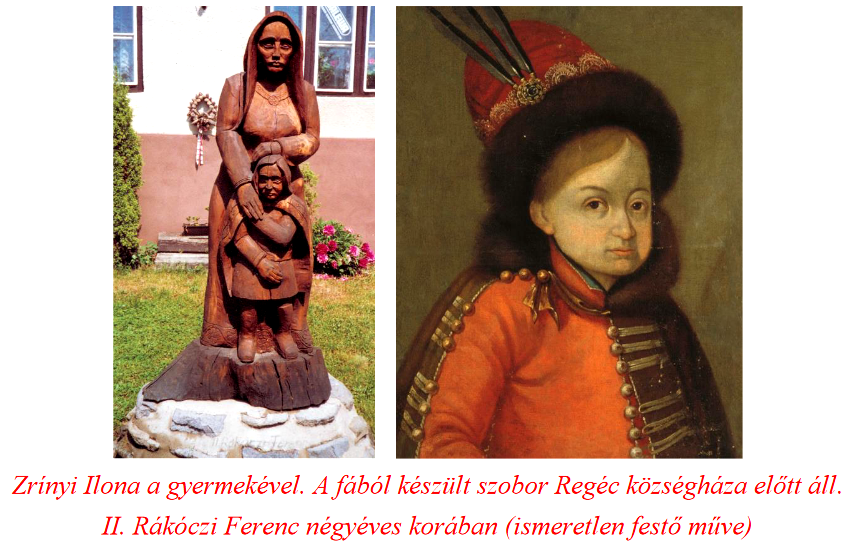 In March 1678, Ilona Zrínyi and her children moved their seat to Sárospatak castle, where they set up an independent court. He needed this, because his relationship with his mother-in-law in Munkács was not smooth. Zsófia Báthori adhered to old customs, her way of life was determined by Jesuit restrictions, which also extended to eating habits. On the other hand, his daughter-in-law did not give up on the easier life in Croatia. He did not disdain Italian and French food and drinks, he loved music, games, and fun. (However, it was also recorded that during her childhood, Ilona often visited the yard of her uncle Miklós Zrínyi in Csáktornya, where she saw the Turkish heads impaled in the yard.)
In March 1678, Ilona Zrínyi and her children moved their seat to Sárospatak castle, where they set up an independent court. He needed this, because his relationship with his mother-in-law in Munkács was not smooth. Zsófia Báthori adhered to old customs, her way of life was determined by Jesuit restrictions, which also extended to eating habits. On the other hand, his daughter-in-law did not give up on the easier life in Croatia. He did not disdain Italian and French food and drinks, he loved music, games, and fun. (However, it was also recorded that during her childhood, Ilona often visited the yard of her uncle Miklós Zrínyi in Csáktornya, where she saw the Turkish heads impaled in the yard.)
Little Rákóczi's first great experience was the river lifestyle, the many guests, and making friends with children of a similar age who come here. Patakon's teaching of Comenius, Orbis Pictus, which also included the children's games of the time, was still alive. Running, shooting arrows, swinging, fencing with a wooden sword, walking on stilts, bowling, playing ball, riding, city trom. And the older ones liked chess, card games, and tavola of Turkish origin. The childhood years in Patak were of decisive importance II. On the life and development of Ferenc Rákóczi.

In addition to the game, learning, the colorful cultural and linguistic environment were definitely factors that shaped people.
The people surrounding little Rákóczi spoke Polish, Ruthenian, Tó, Italian, German, Czech, Croatian, and German, and these languages stuck with the child. Later, Rákóczi and his wife understood German and French, and Turkish during the emigration. We can say that Rákóczi understood and spoke most European languages. However, its real language and culture remained Hungarian. He thought, dreamed and wrote in Hungarian. His Hungarianness was unassailable, which is proven by the fact that even during his student years, the young noble could not be reeducated as a German. He was influenced by the diversity of music and religion, the multitude of tales, stories, and historical events.
The appearance of Imre Thököly
The bloody battles raging in the Highlands and the plague, which claimed even more victims, claimed thousands of lives in 1679. Ilona Zrínyi retreated with her children to the harsh, uncomfortable, but safe castle in Makovica. In the meantime, János Zrínyi - Ilona's brother - serving the emperor was captured by the Kurucs in Transylvania. Imre Thököly, who at that time was already a recognized leader of the Kurucs, spent time together with his prestigious prisoner. It is not known whether this relationship or the attraction of the huge Rákóczi estates was the reason, but in 1679 Imre Thököly exchanged notes with the widow Ilona Zrínyi. The situation was complicated, because the Thököly and Rákóczi estates were entangled, and only a marriage could resolve property disputes.

However, the marriage was opposed in Vienna, as the scion of a Catholic family loyal to the emperor would tie his fate with the leader of the Kurucs, the evangelical Thököly. However, Ilona could not forget the death of her father and uncle, the unfortunate fate of her mother, and the loss of her properties in the southern region. Zsófia Báthori was also against the marriage, as it was her son's widow. His opposition was increased by religious antagonisms, and his great plan, the election of his grandson as Polish king, also went up in smoke with this Frig. The old princess died in the summer of 1680, which caused further complications. He left behind a will that almost eliminated his grandson from his fortune. He left everything to the imperial treasury and the Jesuits. Ilona Zrínyi protested vehemently against the will, which further deepened the gap between her and Vienna.
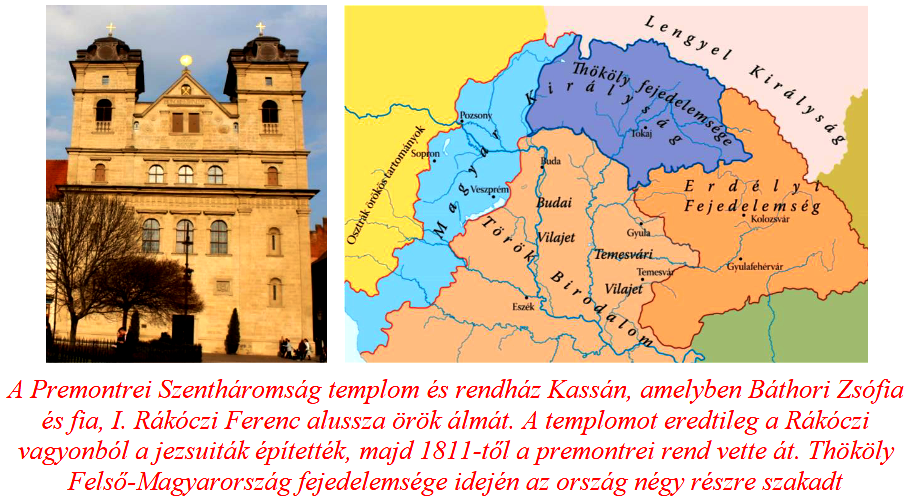
Ilona Zrínyi, Europe's bravest woman
As the French king called Ilona Zrínyi. In the eventful summer of 1682, the wedding took place in Munkács Castle. Many thought it was a marriage of convenience, since 25-year-old Imre Thököly married 39-year-old Ilona Zrínyi. However, decades later, Ferenc Rákóczi, who spent his childhood in happiness, remembers his mother like this: "The power of love is stronger in great souls than in ordinary ones".
In the three years that passed after the marriage, the imperial forces ravaged Hungary, fighting both the Turks and the Kurucs. Ilona Zrínyi fled from Patak to Munkács castle, where defenses against the siege were organized. Thököly's freedom struggle was also doomed. The Pasha of Várad received Thököly, who came to visit him, thus ending the rule of the prince of Upper Hungary (1682-1685) and the prince of Transylvania (September 22, 1690 – October 25, 1690). He lived the last years of his life in Turkey.
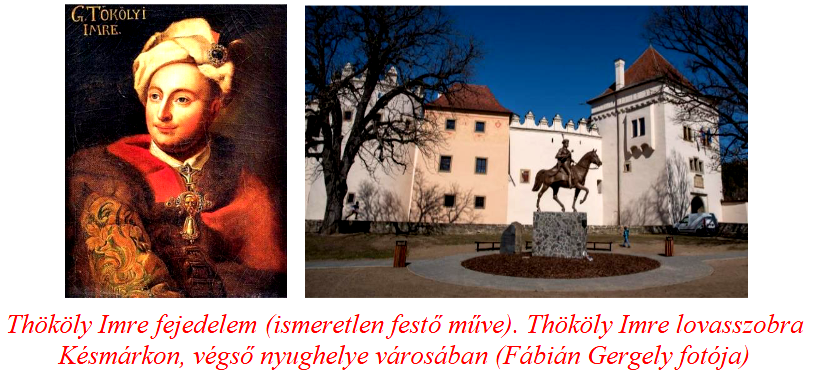
The Kuruc War of Independence failed, the emperors occupied almost every castle in the country. When Buda was recaptured from the Turks in 1686, only Munkács Castle remained in Hungarian hands. Even so, almost two years passed until the emperors took Munkács castle. However, at that time, all of Europe was already talking about the name of Ilona Zrínyi, that a heroic woman could resist Habsburg arbitrariness and siege. After the victories of Miklós Zrínyi, the hero of Szigetvár, and his great-grandson Miklós Zrínyi in 1663-1664, another Zrínyi, who raised the family's name and reputation to European rank with his heroic deeds. However, on January 17, 1688, he was forced to give up the castle. However, Ilona Zrínyi managed to obtain amnesty for the defenders of the castle, and the Rákóczi property could remain in the name of her children.
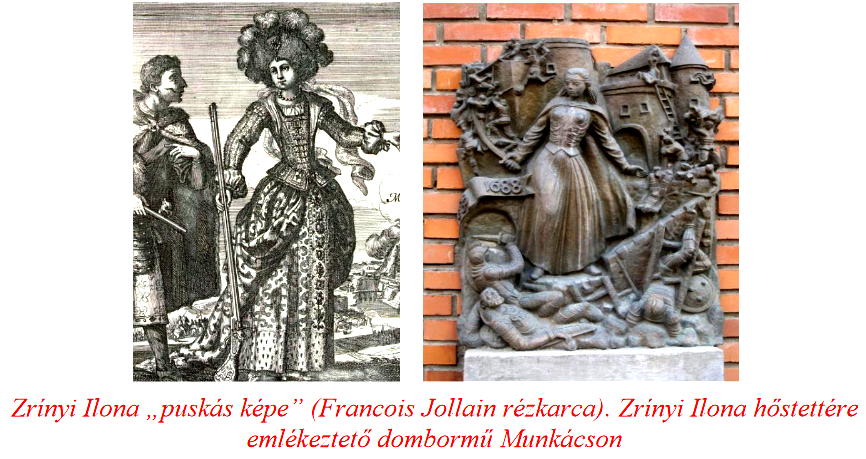
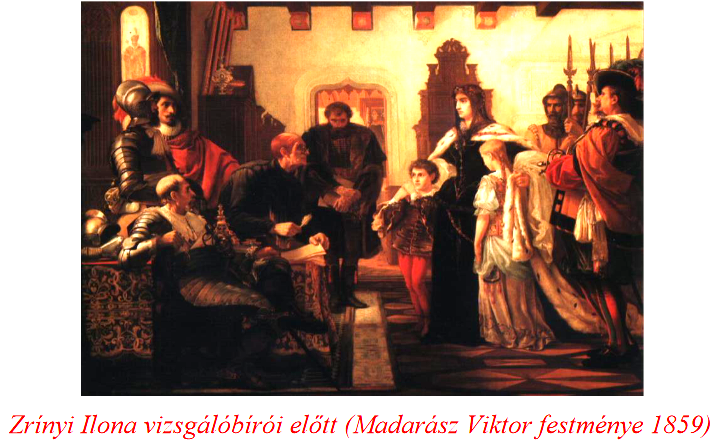
Her children were separated from Ilona Zrínyi, but she never saw her son. He was kept in a convent in Vienna. In 1692, Thököly freed his wife from Austrian captivity. She then accompanied her husband, Imré Thököly, into exile in Turkey. He died in Nicomedia in 1703. A few weeks before the II. The Kuruc War of Independence led by Ferenc Rákóczi broke out. Two centuries had to pass until his mortal remains were brought home in 1906 and laid to rest next to his son in the crypt of the St. Elizabeth's Cathedral in Kassa.
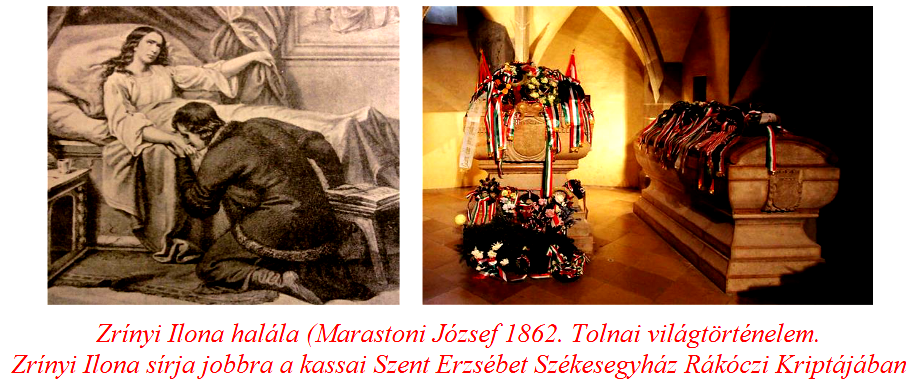
Author: Ferenc Bánhegyi
(Caption image: YouTube screenshot )
The parts of the series published so far can be read here: 1., 2., 3., 4., 5., 6., 7., 8., 9., 10., 11., 12., 13., 14., 15., 16., 17., 18., 19., 20., 21., 22., 23., 24,, 25., 26., 27., 28., 29/1.,29/2., 30., 31., 32., 33., 34., 35., 36., 37., 38., 39., 40., 41., 42., 43., 44., 45., 46., 47., 48.

